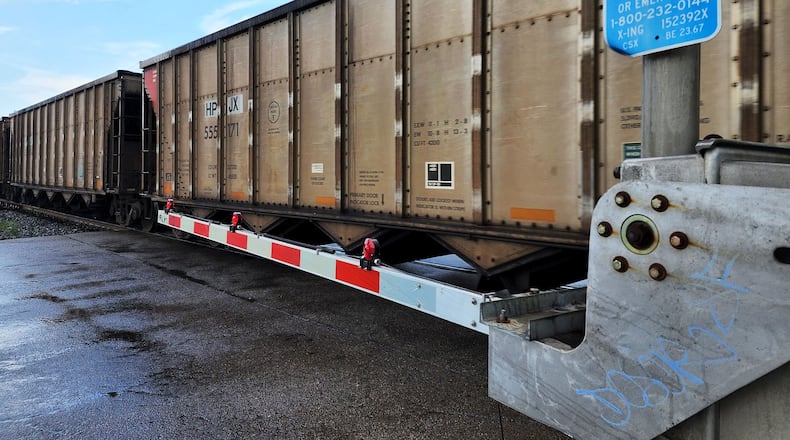“CSX has a sign at every one of its crossings, and that sign has a number which you can report an emergency at that crossing and you can also report a blocked crossing,” said Porter. “If the community or a city official calls, that gets the information to CSX and that phone number is staffed 24 hours a day, 365 days a year by a person.”
That information will get communicated to the local operations center in Cincinnati, and possibly resolve the issue sooner. Porter said CSX officials said there are various reasons for why a train is stopped ― from switching tracks to mechanical reasons ― and reporting can help redirect trains further south or north and prevent a backup on the tracks.
There is also a Federal Railroad Administration reporting system via the website or a smartphone app.
Ohio has the most reported incidents with trains in the country, with 5,174 from Dec. 31, 2019, to Sept. 30, 2021, according to the FRA. That’s about 20% of the total reports received (25,375) over that timeframe. Illinois was second in reported incidents with 3,659 reported incidents.
CSX Transportation, which is one of two rail companies that run through Hamilton, had the most reported incidents nationwide over that time span with 6,668.
Vice Mayor Michael Ryan said the meeting was called because there had been an increase in blocked railroad crossings, specifically at Laurel Avenue. The area is a switching station, where northbound and southbound trains must switch tracks to continue the journey. Ryan said it’s a source of “frustration” for not only the residents and businesses but also first responders.
Scott Scrimizzi, Hamilton’s director of Public Safety, said in addition to residential and business frustrations, the blocked crossing impedes public safety
“Because of where fire Station 26 is located, a lot of their runs might be in the Grand Boulevard area,” he said. “They’ve got to make a decision pretty quick to see if the crossing is blocked.”
An emergency service call to Hamilton Plaza could result in a delay of minutes, which literally could be a life-or-death medical emergency, Scrimizzi said.
One of the reasons why the crossing is blocked is due to the length of the trains. The average CSX train is 11,000 feet, but could be as short as 8,500 feet and as long as 13,000 feet. This is due to staffing shortages, Ryan said. CSX’s Director of State Relations, Rusty Orben, who was at the meeting last week, was not available for comment.
With staffing shortages, a problem many businesses have experienced in recent years, the trains need to get longer.
“They said, ‘Hopefully that will reduce when we get more staff,’ but it only takes one train to block Laurel Avenue,” Ryan said.
The vice mayor did call it a “good conversation,” though, believing the issue of blocked intersections was not resolved.
“It was really a lot of back and forth,” Ryan said. “They are going to be working with us on a few items to potentially help reduce some things going on. But at the end of the day, it’s business to them.”
Porter said a regional approach may be needed.
“When they do have optionality, where they choose to stop a train, if we have a preference of certain at-grade crossings, then they can take that into consideration,” he said. “Also, if we can work with neighboring communities to have preference. If that crossing is not blocked at Laurel, the next crossing down is at Symmes Road (in Fairfield). If we could work at a regional level and have a regional recommendation to CSX, they would take that into consideration when they are blocking intersections.”
Fairfield Public Works Director Ben Mann said it has been several years since they’ve talked with CSX, and though they initially addressed the concerns of simultaneously blocking Symmes and North Gilmore roads but “it’s starting to fall back to the way it was.”
Mann said it’s a problem when trains are blocking either intersection, especially during rush hour, and said the transportation company’s “biggest issue” is the longer trains.
About the Author

